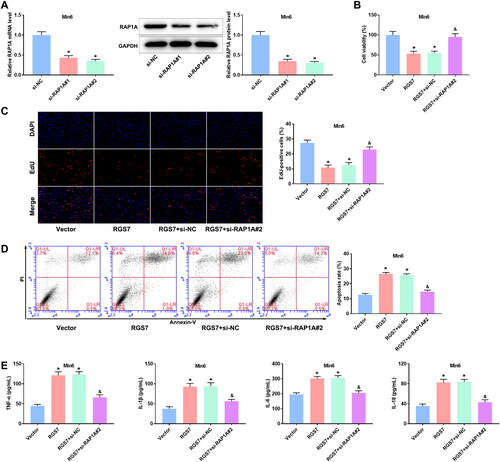Figures & data
Figure 1. RGS7 is highly expressed in PA-induced pancreatic β-cells. A: Data of GSE118230 showed the expression of R7 family members. B: Data of GSE118230 showed that RGS7 was upregulated in PA-induced pancreatic β-cells. C and D: qRT-PCR and western blot showed the expression of RGS7 in four pancreatic β-cell lines. E and F: qRT-PCR and western blot showed that RGS7 was upregulated in PA-induced pancreatic β-cells. All the experiments were performed triplicate. *p < 0.05 vs. Control group.
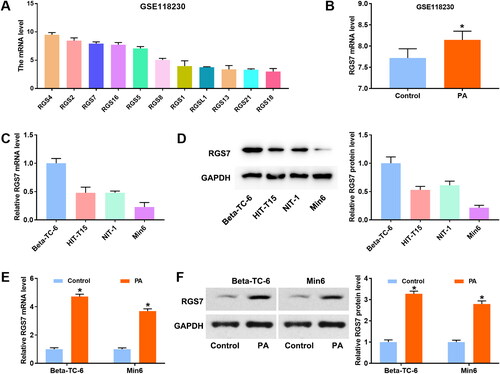
Figure 2. RGS7 silence promotes proliferation and inhibits apoptosis of PA-induced pancreatic β-cells. A: RGS7 siRNAs decreased RGS7 expression in pancreatic β-cells. *p < 0.05 vs. si-NC group. B: RGS7 silence had no effect on cell viability of pancreatic β-cells. C: RGS7 siRNAs decreased RGS7 expression in PA-induced pancreatic β-cells. D and E: RGS7 silence increased cell viability and promoted proliferation of PA-induced pancreatic β-cells. F: RGS7 silence reduced apoptosis rate of PA-induced pancreatic β-cells. *p < 0.05 vs. Control group. &p < 0.05 vs. PA + si-NC group. All the experiments were performed triplicate.
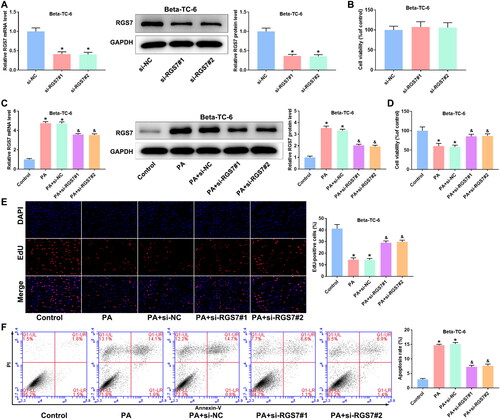
Figure 3. RGS7 overexpression inhibits proliferation and promotes apoptosis of PA-induced pancreatic β-cells. A: RGS7 overexpression increased RGS7 expression in pancreatic β-cells. *p < 0.05 vs. Vector group. B: RGS7 overexpression increased RGS7 expression in PA-induced pancreatic β-cells. C and D: RGS7 overexpression suppressed cell viability and proliferation of PA-induced pancreatic β-cells. E: RGS7 overexpression increased apoptosis rate of PA-induced pancreatic β-cells. *p < 0.05 vs. Control group. &p < 0.05 vs. PA + Vector group. F: RGS7-mutant and RGS7 overexpression significantly increased RGS7 expression in pancreatic β-cells. G: RGS7-mutant overexpression has no effect on apoptosis rate of pancreatic β-cells. *p < 0.05 vs. Vector group. All the experiments were performed triplicate.

Figure 4. RGS7 silence suppressed inflammation levels of PA-induced pancreatic β-cells. A: RGS7 silence suppressed the levels of TNF-α, IL-1β, IL-6, and IL-18 of pancreatic β-cells. B: RGS7 overexpression increased the levels of TNF-α, IL-1β, IL-6, and IL-18 of pancreatic β-cells. All the experiments were performed triplicate. *p < 0.05 vs. Control group. &p < 0.05 vs. PA + si-NC/Vector group.
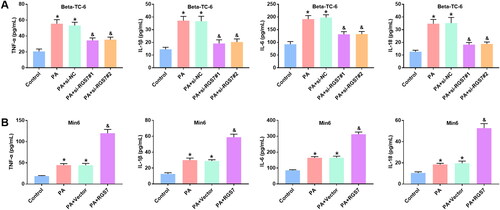
Figure 5. RGS7 activates the chemokine signaling pathway in PA-induced pancreatic β-cells. A: KEGG analysis showed that RGS7 activated the chemokine signaling pathway in PA-induced pancreatic β-cells. B: RGS7 silence decreased RAP1A expression and increased the expression of AKT3 and PIK3R3 in PA-induced pancreatic β-cells. *p < 0.05 vs. si-NC group. C: RGS7 overexpression increased RAP1A expression and decreased the expression of AKT3 and PIK3R3 in PA-induced pancreatic β-cells. *p < 0.05 vs. Control group. All the experiments were performed triplicate.
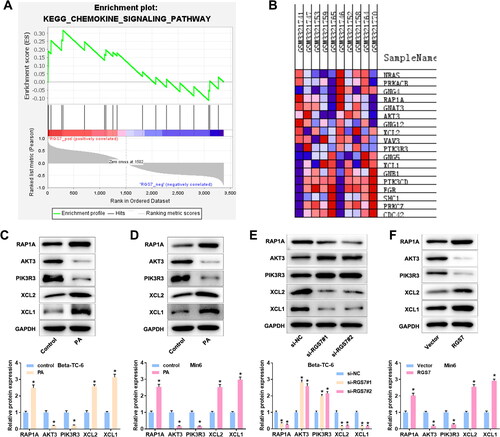
Figure 6. RGS7 overexpression eliminates the effect of RAPIA silence on PA-induced pancreatic β-cells. A: RAP1A siRNAs decreased RAP1A expression in pancreatic β-cells. *p < 0.05 vs. si-NC group according to one-way ANOVA. B: Insulin content in PA-induced pancreatic β-cells. C: Cell viability of PA-induced pancreatic β-cells. D: The proliferation of PA-induced pancreatic β-cells. E: The apoptosis rate of PA-induced pancreatic β-cells. F: The inflammation levels of PA-induced pancreatic β-cells. *p < 0.05 vs. Vector group, #p < 0.05 vs. RGS7 + si-NC group. All the experiments were performed triplicate.
